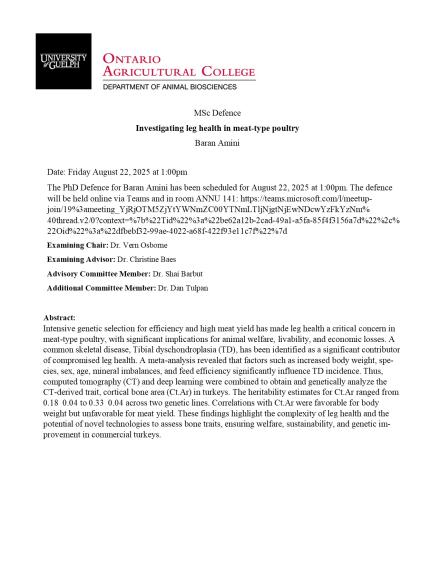The defence will be held online via Teams and in room ANNU 141:https://teams.microsoft.com/l/meetup-join/19%3ameeting_YjRjOTM5ZjYtYWNmZC00YTNmLTljNjgtNjEwNDcwYzFkYzNm%40thread.v2/0?context=%7b%22Tid%22%3a%22be62a12b-2cad-49a1-a5fa-85f4f3156a7d%22%2c%22Oid%22%3a%22dfbebf32-99ae-4022-a68f-422f93e11c7f%22%7d

Investigating leg health in meat-type poultry
Intensive genetic selection for efficiency and high meat yield has made leg health a critical concern in meat-type poultry, with significant implications for animal welfare, livability, and economic losses. A common skeletal disease, Tibial dyschondroplasia (TD), has been identified as a significant contributor of compromised leg health. A meta-analysis revealed that factors such as increased body weight, species, sex, age, mineral imbalances, and feed efficiency significantly influence TD incidence. Thus, computed tomography (CT) and deep learning were combined to obtain and genetically analyze the CT-derived trait, cortical bone area (Ct.Ar) in turkeys. The heritability estimates for Ct.Ar ranged from 0.18 0.04 to 0.33 0.04 across two genetic lines. Correlations with Ct.Ar were favorable for body weight but unfavorable for meat yield. These findings highlight the complexity of leg health and the potential of novel technologies to assess bone traits, ensuring welfare, sustainability, and genetic improvement in commercial turkeys.
